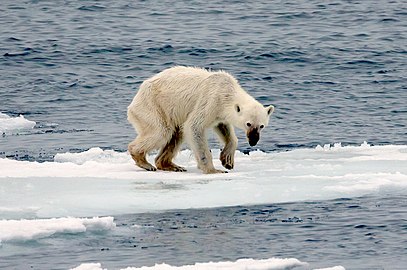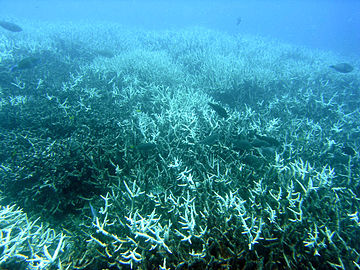Climate change has always been there for ages, both globally and regionally, and its duration ranges from years to many millennia. Before the human intervention there was a substantial variation in climate due to the natural factors only, after the combined contribution of both natural and human factors the situation started getting worse1 . The existence of human civilization on earth is about 6 thousand years old and they have been evolving from period to period, a rapid increase in the human population and thereby the increase in activities since the beginning of industrialization. The abundance of natural resources is taken for granted and exploited to the level that it is dying a slow death and would vanish if not managed sustainably. Climate change is one of the latest results of the human induced activities like deforestation, land degradation, burning of the fossil fuels etc. and it is the direct result of the global warming. Climate change is the variation to the standard temperature, whether extreme cold or hot or rainfall, as compared to the normal scenario. Such deviation destroys the equanimity of climate and consequently leads to catastrophic calamities like avalanche, draught, flood, loss of biodiversity, degradation of the natural resources, damage to livelihood of the people, increased cases of the disease, low productivity of the crops, increased migration of the people etc.
People’s Perception of Climate change
Different people with diverse backgrounds have their own views on climate change, that could be same or heterogeneous as well. But the thing that matters the most is that at least they should have some view, and not totally ignorant to this giant problem. Everybody’s perspective is important because how we see things shape what we choose to do. People perception varies based on their age group, location, occupation, education level etc. People lack first hand experience related to the potential consequences of the climate change which causes a lack in their action. From this perspective, People who have personal experience related to climate change will more likely to be concerned by the issue and thus more inclined to undertake sustainable behaviour.
The urgent need to mitigate and adapt to climate change is becoming more widely understood in scientific and policy circles, but public awareness lags behind therefore it is important to find out the reason and the mentality that whether they are neglecting it or they think that it is not a matter of great concern. Usually the perception of teenagers and children is not considered as they are thought to be the people with less experience and knowledge but in last few years it has been seen that how the children are getting aware about their surrounding and the devastating human activities which is hampering their future, in last few years a new teenage activist named Greta Thunberg became famous for leading largest climate strike and she became face of the youth climate movement, her bold attitude changed the views of people regarding the perception of children and therefore it has become important to consider and bring their views in the main stream.
Climate Change’s Impact on wildlife
Wildlife has always been responding to the changing climatic conditions through transformation for millions of years. Climatic conditions keep on changing across the whole planet, the change could be slow, rapid, in large increment or in small increment, which causes the rearrangement of biological association, but since the early 19th century human induced climatic change has altered the natural variability which caused an increment in the rate of loss of biodiversity. There has been a change in the physiology, phenology and distribution of various species whether terrestrial or aquatic. Listed below are the few examples of how the climate change is causing a major threat to the wildlife.
Polar Bear on Arctic Zone
When it comes to the climate change, the most visible impact could be seen in the Arctic. It is the home of about 26,000 Polar Bears which depends on the sea ice as their hunting ground, from which they hunt their main food source, ringed seals. During the summers, when the ice melts, polar bears move to land and waits for the summers to pass, till then they survive on the stored fat and through scavenging. As the ice starts to freeze again, they go back to hunt their favorite meals ringed seals, harp seals, bearded seal etc. and they occasionally get to hunt the walrus, beluga and narwhal. However, the arctic food chain is disrupted because of the climate change as the ice is melting earlier and reforming later which causes polar bears to live on the stored fat for a much longer duration, resulting in the worsening of the bear’s body and ultimately, they starve to death, with the continuous arctic warming the population of the polar bears is likely to collapse and will be pushed to extinction.

Reef Destruction
Coral reefs are one of the most biologically diverse ecosystems on the earth which plays an important role in the ecosystem. They are home to about 25% of the marine species and protects the species from harmful chemicals and pollutants, they help in stabilizing the sea beds and prevents sea erosion, not just the flora and fauna but the humans are also dependent on coral reefs for many reasons like food, medicine, income etc. Besides having such an important role in maintaining the balance in the ecosystem, the coral reefs are getting diminished due to the climate change. A rapid increase in the temperature causes the coral reefs to expel their symbiotic algae which results in the death of coral reefs across the tropics as they are sensitive to sudden heat.

Impact on Birds
The population dynamic of the birds is highly dependent on the weather, climate change directly and indirectly affects the birds. Various factors like precipitation, temperature, habitat and lands connectivity influence the bird’s distribution, it may affect the metabolic rate of the birds, i.e., during too cold weather and too hot weather more energy is needed for thermoregulation, young ones can even die of starvation and chilling. Besides this climate change also affects the bird’s behavior such as influencing the foraging and courtship, the long-term shift in average weather causes the disruption in breeding and migration which ultimately causes a decline in population .
Spread of infectious diseases
The imbalance in the climatic conditions have shown a surge in the spread of transferable diseases which is either the result of increased survival rate of the causative agents with extreme weather condition or because the vectors (mosquito, tick) found a suitable environment to flourish, either way the spreading rate of infectious diseases have increased in the wild animals such as black grouse, ibex, chamois and snow grouse. The spread of vector borne diseases are exerting pressure on the population of certain wild animals which is pushing them to the verge of extinction.
Conclusion
Climate change is not something new it has already been there and the species have always been able to adapt itself according to the change but the impact of human induced activities accelerated the climate change which in turn has put a tremendous pressure on the ecosystem and thereby the biodiversity which could been seen and felt in almost the entire planet, and the human perception plays an important role in the rate and occurrence of such activities which should be studied thoroughly. Climate changes has not spared any part of the world be it tropical, temperate or arctic zone, the footprints for the same could be found even in your neighborhood. It’s the time to get up and act.
Written By- Adarsh Singh
Help us Help Them! Think Wildlife Foundation is a non profit organization with various conservation initiatives. Our most prominent campaign is our Caring for Pari intiative. Pari is a rehabilitated elephant at the Wildlife SoS Hospital. 25% of the profits from our store are donated to the elephant hospital for Pari. Other than buying our wonderful merchandise, you could donate directly to our Caring For Pari fundraiser.
